|
NOAA Celebrates Seafood Week 2019

At NOAA Fisheries, we know the recipe for sustainable seafood includes strong science, responsive management, and enforced compliance. The United States is a global leader in sustainable seafood, and we’re working to advance sustainable management practices internationally. Join us as we celebrate seafood all month long!

Join us for National Seafood Month 2019 and learn how we work to support healthy, sustainable seafood all year round. Check out FishWatch for up-to-date information on the science, status, and management of U.S. seafood. And join in #SeafoodMonth on our social media channels— Facebook, Instagram, and Twitter. Below, read a new three-part series that tells the saga of the collapse and recovery of West Coast rockfish fisheries. |
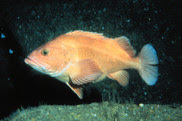
Today at San Francisco’s Fisherman’s Wharf, rockfish is returning to the market and to dinner tables. Giuseppe “Joe” Pennisi helped reintroduce locals to the flaky white fish that was once a mainstay of West Coast seafood.
|

The collapse of West Coast groundfish fisheries led to sweeping closures in 2002. Some fishermen left, but those who stayed worked together and made sacrifices to save the fishery.
|

Once the stocks recovered, fishermen, NOAA Fisheries, and nonprofit organizations worked together to put local rockfish back on fish counters often dominated by imported fish.
|
|
|
Highlights

NOAA’s National Sea Grant College Program has announced three awards totaling $2 million in support of the 2019 Sea Grant Highly Migratory Species Research Initiative. The funded projects will focus on reducing bycatch and understanding post-release mortality for sharks and other highly migratory species.
|

In a new report, NOAA Fisheries describes how "opt-in," or non-mandatory, smartphone apps may improve the agency's estimates of marine recreational catch. The agency is committed to identifying ways electronic reporting can improve our recreational fishing surveys.
|
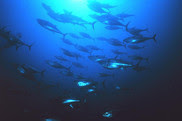
NOAA Fisheries released the final version of a formal evaluation of the Individual Bluefin Quota Program. Managers will use the findings to determine whether the program is meeting objectives and to identify modifications to consider in developing Amendment 13 to the 2006 Consolidated Atlantic Highly Migratory Species Fishery Management Plan.
|

By December 9, please submit your comments on a proposed rule to designate critical habitat for the endangered Western North Pacific distinct population segment, the endangered Central America DPS, and the threatened Mexico DPS of humpback whales. Proposed areas are located off the coasts of California, Oregon, Washington, and Alaska.
|
|
|
Alaska

NOAA’s Alaska Marine Mammal Stranding Network depends on recreational and commercial boaters and other ocean users to spot and report entangled whales off Alaska’s coast. NOAA Fisheries has teamed up with The Nature Conservancy to develop a new online course to help them report entanglements.
|
|
|
West Coast

On October 7, a team of scientists and engineers left Newport, Oregon, for a month-long research cruise along the West Coast. The expedition is the collective effort of three federal agencies led by NOAA Fisheries and will dive deep to explore corals, sponges, and fish habitat on the ocean floor. A live video feed will allow the public to follow along with the expedition.
|
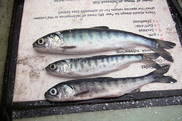
About 5 years ago a large marine heatwave that became known as “the Blob” took hold in the Pacific Ocean off the West Coast. Read the second installment of a three-part series about the Blob and a changing ocean and what it may mean for the future of the California Current Ecosystem.
|
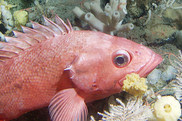
Groundfish and other marine creatures appear to be thriving under unprecedented ocean conditions, according to a new paper. The high temperatures that came with the marine heatwave known as “the Blob” led to unprecedented mixing of local and subtropical species. West Coast rockfish have been thriving under the new conditions after their population collapsed from overfishing in the 2000s.
|
|
|
Pacific Islands
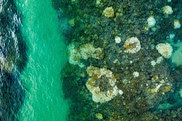
NOAA researchers are joining the multi-institution Hawaii Coral Bleaching Collaborative to document the extent and severity of coral bleaching across the main Hawaiian Islands. Underwater digital photos, stitched together by software to create three-dimensional models, will help scientists assess how colonies respond to bleaching events.
|

Two vacationers on Oahu discovered a sea turtle nest under their beach blanket. Their quick reporting allowed researchers to document only the sixth nesting site of rare Olive Ridley sea turtles in Hawaii.
|

Recently weaned female Hawaiian monk seal pup RL44, known as “Nanea,” was discovered dead on the North Shore of Oahu on September 24. The circumstances surrounding her death indicate that she did not die of natural causes. The case has been referred to NOAA's Office of Law Enforcement for investigation. Anyone with useful information should call (800) 853-1964.
|
|
|
Southeast

By November 4, please submit your comments on a proposed rule that would increase the recreational and commercial minimum size limit for cobia in the Gulf of Mexico’s Gulf Zone from 33 inches fork length to 36.
|
|
|
Greater Atlantic

NOAA Fisheries, in partnership with NOAA’s Climate Program Office, is supporting five new projects dedicated to enhancing the capacity of fishing communities in the Northeast to assess climate-driven socio-economic risks and impacts. These projects are part of NOAA Fisheries’ efforts to understand and respond to changing climate, oceans and fisheries in the Northeast region. |

The Northeast Fisheries Science Center's Cooperative Research Branch is wrapping up its 2019 effort to learn more about how cooperative research can work better for everyone. The workshop series has ended, but the Center is still accepting feedback by email through October 11.
|

NOAA Fisheries’ Greater Atlantic Regional Fisheries Office is hosting three workshops to provide an opportunity for stakeholder input on developing potential short- and long-term management approaches for the recreational fishing community. Workshops are scheduled for October 19, 22, and 24.
|

By November 25, please submit your comments on proposed regulations to implement Amendment 8 to the Atlantic Herring Fishery Management Plan. This amendment would establish an acceptable biological catch control rule that accounts for herring’s role in the ecosystem. It would also prohibit midwater trawling in certain inshore federal waters.
|
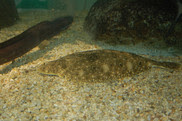
NOAA’s Office of Law Enforcement is offering a reward of up to $20,000 in exchange for information leading to the successful prosecution of individuals suspected of failing to report or significantly misreporting landings of summer flounder (fluke) in New York and New Jersey.
|

In August, the Northeast Fisheries Science Center's Fisheries Sampling Branch organized a workshop to evaluate the process of completing the pre-trip vessel safety checklist required before every observed fishing trip. The Fisheries Sampling Branch plans to start testing and incorporating improvements to the process beginning this fall.
|

Large numbers of Atlantic salmon originating from North America and Europe congregate off the coast of Greenland each summer and fall to feed. But only one population of Atlantic salmon appears to be native to Greenland itself: a small population that spawns in Greenland’s Kapisillit (“Salmon”) River.
|

The Northeast Fisheries Science Center offers an electronic newsletter, Science Highlights, to share regional NOAA Fisheries science news. View the latest issue online, or subscribe directly here. |
|
|
Upcoming Deadlines
October 23 Quotes due from Gulf of Mexico pelagic longline vessel owners interested in participating in the 2020 Oceanic Fish Restoration Project.
October 31 Proposals due for 2020 Species Recovery Grants to States.
October 31 Proposals due for 2020 Species Recovery Grants to Tribes.
November 1 Abstracts due for the 2020 Milford Aquaculture Seminar.
|
|
Upcoming Events
October 10 Last day of the Mid-Atlantic Fishery Management Council meeting in Durham, North Carolina.
|
|
|
|

No comments:
Post a Comment